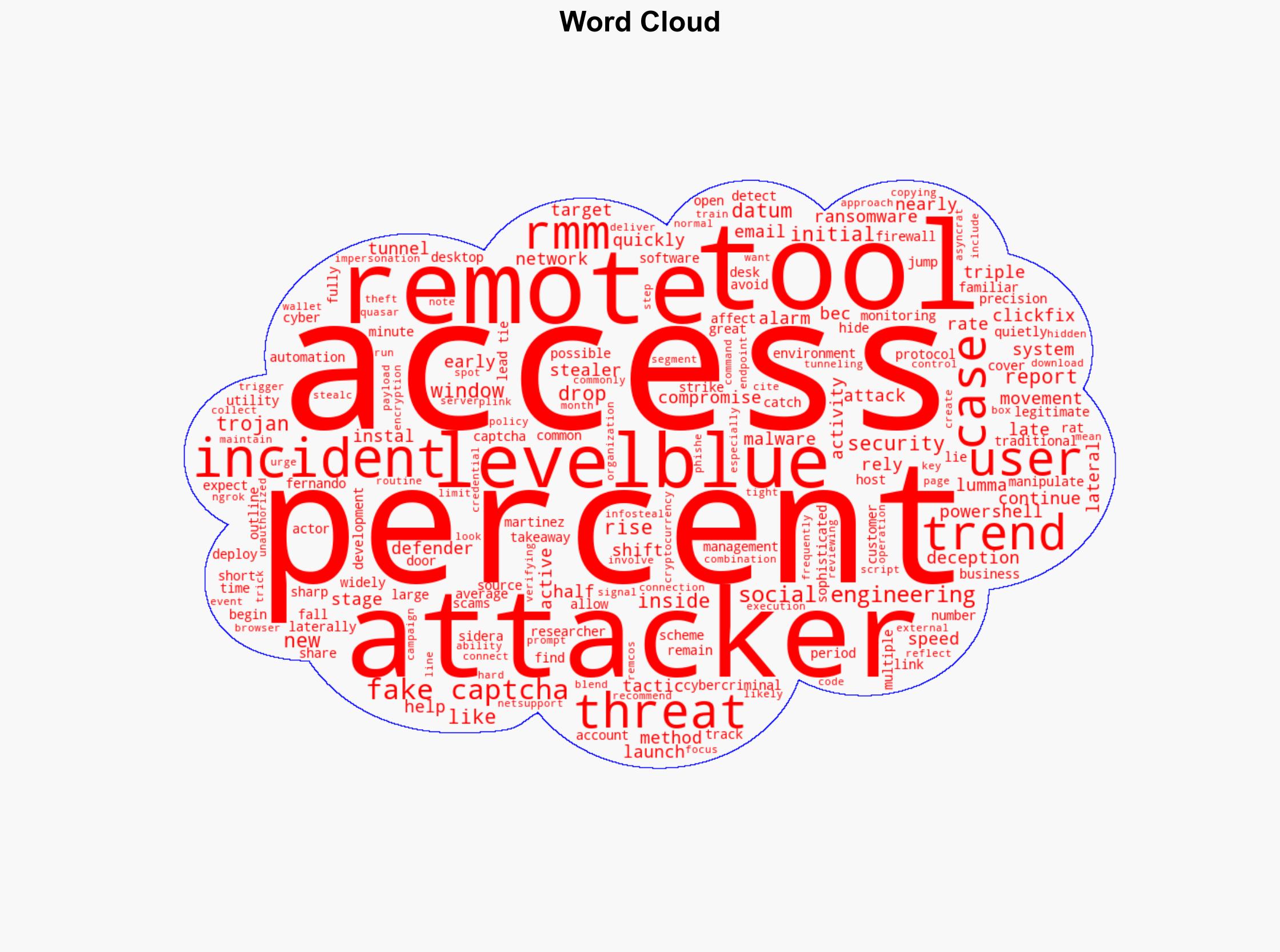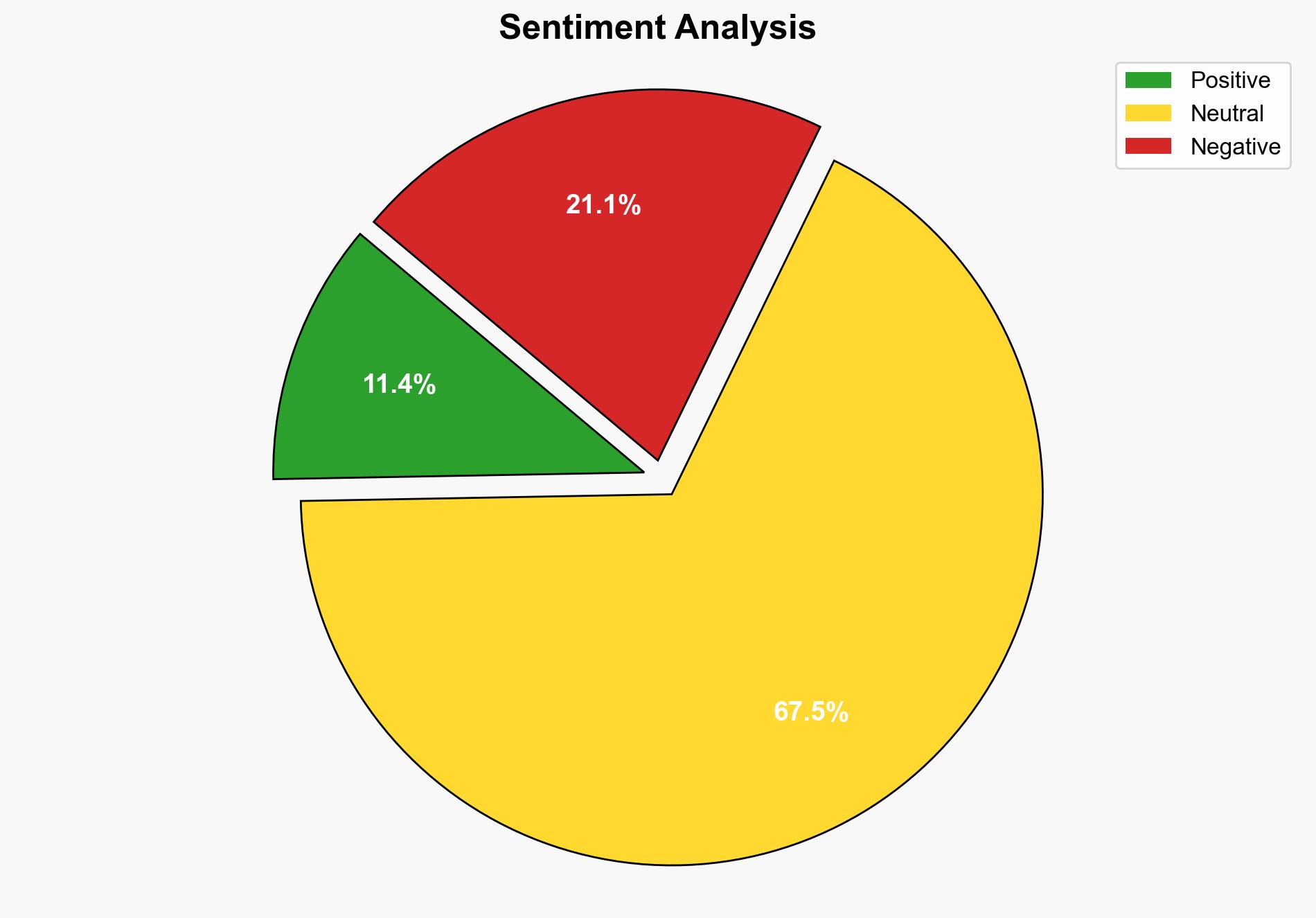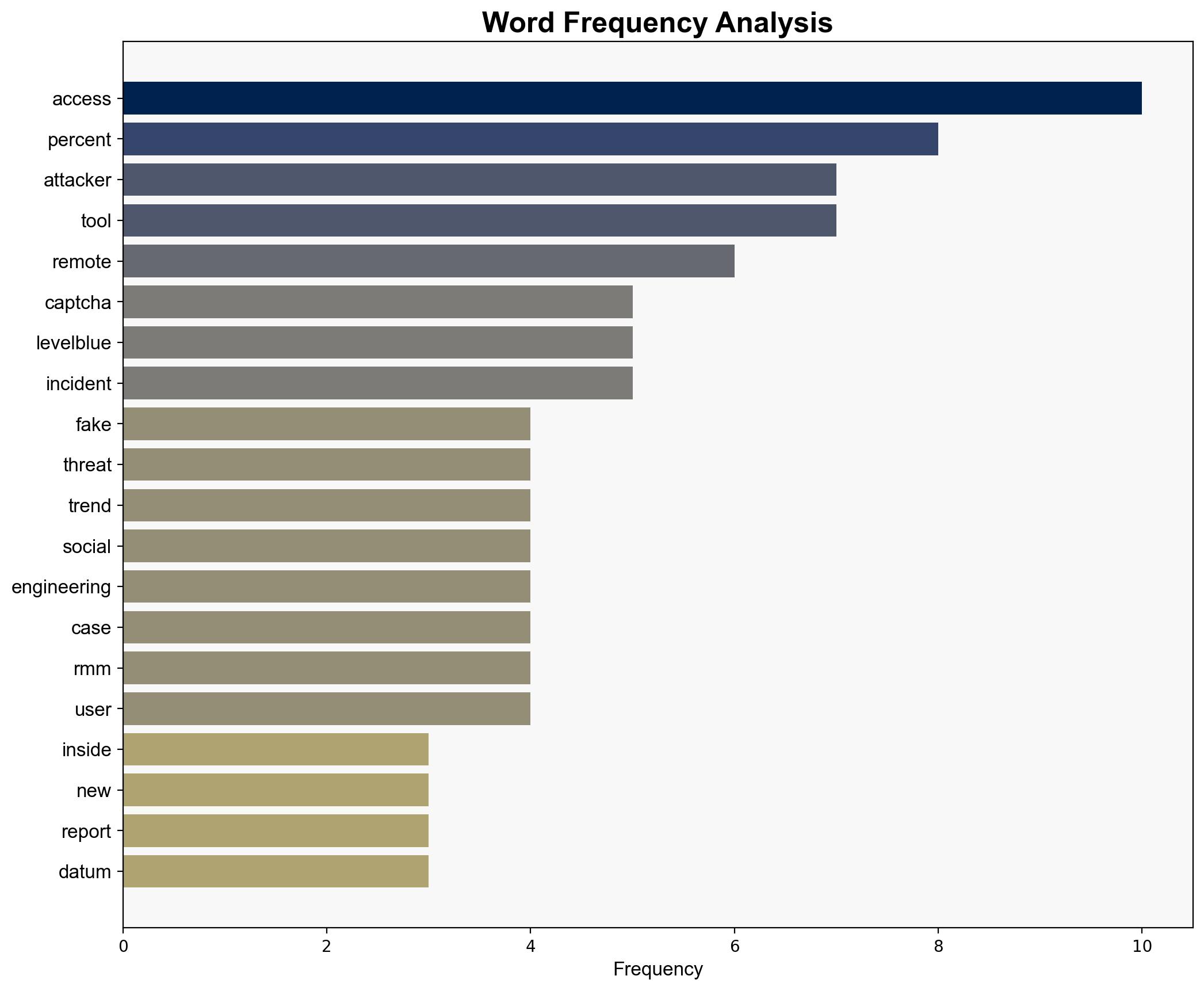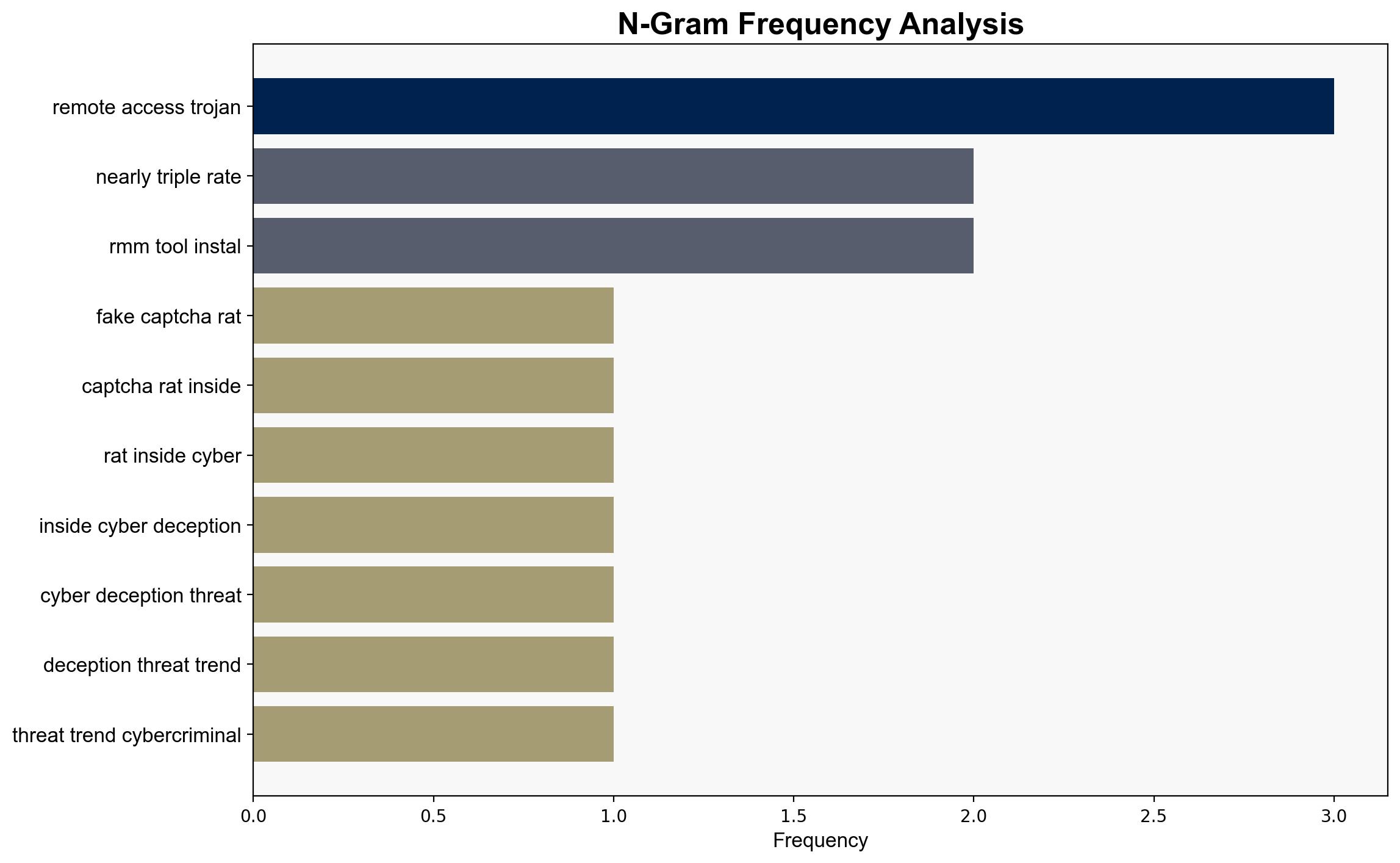From fake CAPTCHAs to RATs Inside 2025s cyber deception threat trends – Help Net Security
Published on: 2025-08-08
Intelligence Report: From fake CAPTCHAs to RATs Inside 2025s cyber deception threat trends – Help Net Security
1. BLUF (Bottom Line Up Front)
The most supported hypothesis is that cybercriminals are increasingly leveraging social engineering tactics, such as fake CAPTCHAs and remote access tools (RATs), to gain initial access and maintain persistence within networks. This trend is characterized by rapid lateral movement and sophisticated deception techniques. Confidence level: High. Recommended action: Enhance user training on social engineering and tighten controls on script execution and remote monitoring tools.
2. Competing Hypotheses
Hypothesis 1: Cybercriminals are primarily using fake CAPTCHAs and RATs to exploit social engineering vulnerabilities, leading to a rapid increase in initial access incidents.
Hypothesis 2: The observed increase in cyber incidents is primarily due to improved detection capabilities and reporting, rather than a significant rise in cybercriminal activity.
Using Analysis of Competing Hypotheses (ACH), Hypothesis 1 is better supported. The data indicates a sharp rise in fake CAPTCHA scams and the use of RATs, suggesting a deliberate shift in tactics by threat actors. Hypothesis 2 is less supported as the report does not provide evidence of significant improvements in detection capabilities during the reporting period.
3. Key Assumptions and Red Flags
Assumptions:
– Cybercriminals have the capability to rapidly adapt and deploy new social engineering tactics.
– Organizations have not significantly improved their detection and response capabilities.
Red Flags:
– Lack of detailed data on the specific improvements in detection capabilities.
– Potential bias in attributing all increases in incidents to cybercriminal activity without considering other factors.
4. Implications and Strategic Risks
The increasing sophistication of social engineering tactics poses a significant risk to organizations, potentially leading to data breaches, financial loss, and reputational damage. The rapid lateral movement within networks suggests a high potential for cascading threats, including ransomware attacks and data exfiltration. The economic impact could be substantial, particularly for sectors heavily reliant on digital infrastructure.
5. Recommendations and Outlook
- Enhance user training programs focused on recognizing and responding to social engineering tactics, particularly fake CAPTCHAs.
- Implement strict controls on PowerShell script execution and the use of remote monitoring tools to limit unauthorized access.
- Scenario-based projections:
- Best Case: Organizations successfully implement recommended measures, leading to a reduction in successful cyber incidents.
- Worst Case: Cybercriminals continue to innovate, outpacing defensive measures, resulting in widespread breaches.
- Most Likely: A moderate increase in incidents as organizations gradually adapt to new threats.
6. Key Individuals and Entities
Fernando Martinez is identified as a lead threat researcher at LevelBlue, contributing to the analysis of current cyber deception trends.
7. Thematic Tags
national security threats, cybersecurity, counter-terrorism, regional focus





